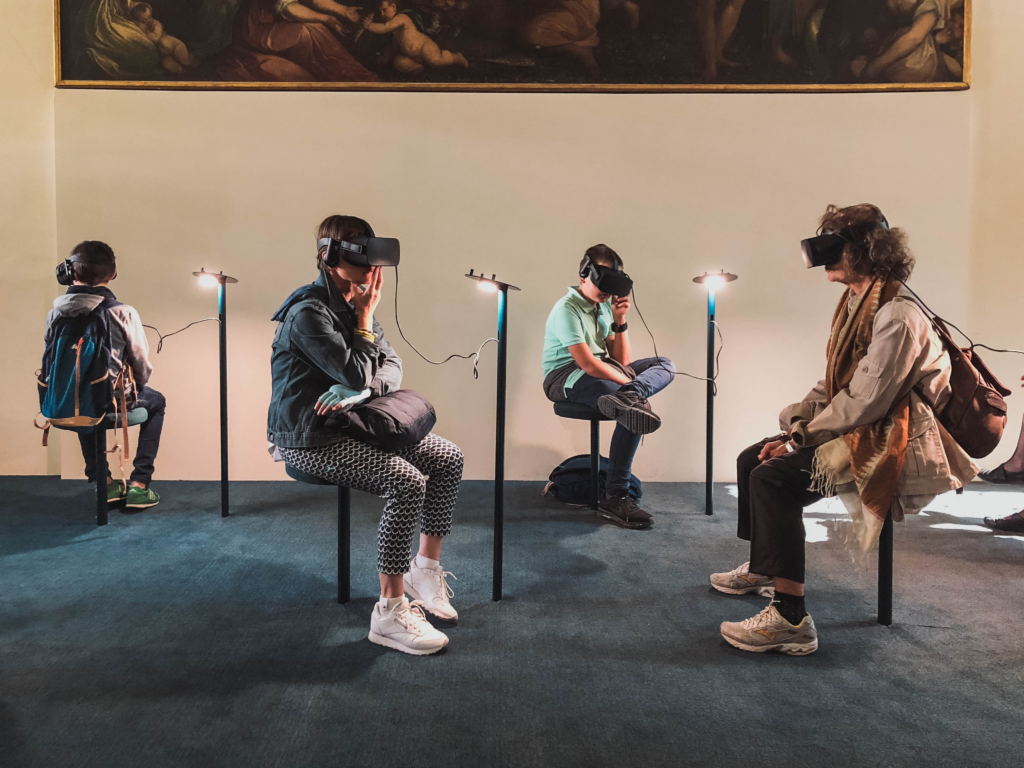Dive into the movie magic of tomorrow – where Augmented Reality (AR) takes storytelling to uncharted dimensions, offering immersive experiences that blur the lines between reel and real.
Movies have always been a window to other worlds, a glimpse into imaginative realms or narratives that resonate with reality. Yet, with Augmented Reality’s foray into the film industry, cinema isn’t just about observing; it’s about immersing. Let’s traverse this burgeoning frontier where AR is amplifying storytelling, transforming not just how we watch movies, but how we experience them.
- Interactive Film Sets: With AR, static movie posters or sets become interactive experiences. Scan a movie poster with your AR-enabled device, and it might play a trailer, show behind-the-scenes footage, or reveal character bios, turning wait times at theaters into engaging pre-show entertainment.
- Character Augmentation: Imagine watching a film and having the lead character step out of the screen and into your living room. AR can bring characters to life in 3D, allowing viewers to interact with them, delving deeper into the storyline.
- Lived Narratives: Instead of merely watching a movie, AR permits viewers to live it. Donning AR glasses can immerse viewers into scenes, making them a part of the narrative. This first-person perspective fosters deeper emotional connections to the story and its characters.
- Layered Storytelling: Films often have rich backstories, which, due to time constraints, don’t make the final cut. AR allows these layers to be explored. By scanning parts of the screen, viewers can access additional information, flashbacks, or even side plots, enriching the primary narrative.
- Interactive Gaming Tie-ins: Movies with gaming counterparts can now offer a seamless transition between both worlds. Fans could participate in AR-driven challenges or quests related to the movie, integrating gaming and cinema like never before.
- Location-based Cinema: Leveraging AR and geolocation, certain film sequences can be experienced in real locations. Imagine watching a historic film and visiting the actual site, only for AR to recreate scenes around you, bridging past and present.
- Enhanced Learning with Docu-Reality: Documentaries take a transformative turn with AR. Historical events, scientific phenomena, or wildlife narratives can be presented with augmented overlays, offering real-time data, visual explanations, or reconstructions.
- Personalized Viewing: With AI and AR converging, films could adapt in real-time based on viewer reactions. Dislike a particular subplot? AR could tweak it, offering alternative scenes or story arcs, tailored to individual preferences.
- Collaborative Viewing: AR could transform solo movie-watching into a collective experience. Friends from around the world could join in, represented as avatars, allowing real-time reactions, discussions, and shared experiences.
- Post-Credits Magic: Instead of rushing out after “The End,” movie-goers could be treated to AR surprises. From interactive Q&As with the cast to augmented reality merchandise offers or secret plot teasers, the post-credits phase becomes a treasure trove of delights.
The fusion of AR with cinema represents more than mere technological novelty; it’s a paradigm shift in storytelling. It ushers in an era where passive consumption becomes active participation, where viewers are no longer bound by the screen’s limits.
However, as the lines between reality and film blur, it brings forth ethical and psychological considerations. How would one differentiate between reality and augmentation? Could AR films alter perceptions or memories over prolonged exposure?

Photo by Lucrezia Carnelos on Unsplash.
Moreover, there’s the challenge of accessibility. AR-driven cinema would necessitate specialized equipment, potentially alienating sections of the audience. Ensuring this immersive future is inclusive for all remains paramount.
Yet, despite the challenges, the promise AR holds for the world of cinema is undeniable. It beckons a future where movies are not just seen but felt, lived, and co-created. A future where every film is a universe waiting to be explored, with viewers at its heart.
As AR reshapes cinema, it offers an invitation – to not just be a spectator, but a participant. To dive deeper, question more, and engage with stories in unprecedented ways. In this augmented epoch of film, every reel becomes a reality waiting to be rediscovered, every plot a portal, and every viewer, a voyager.
Digital Daze is brought to you by Phable.




